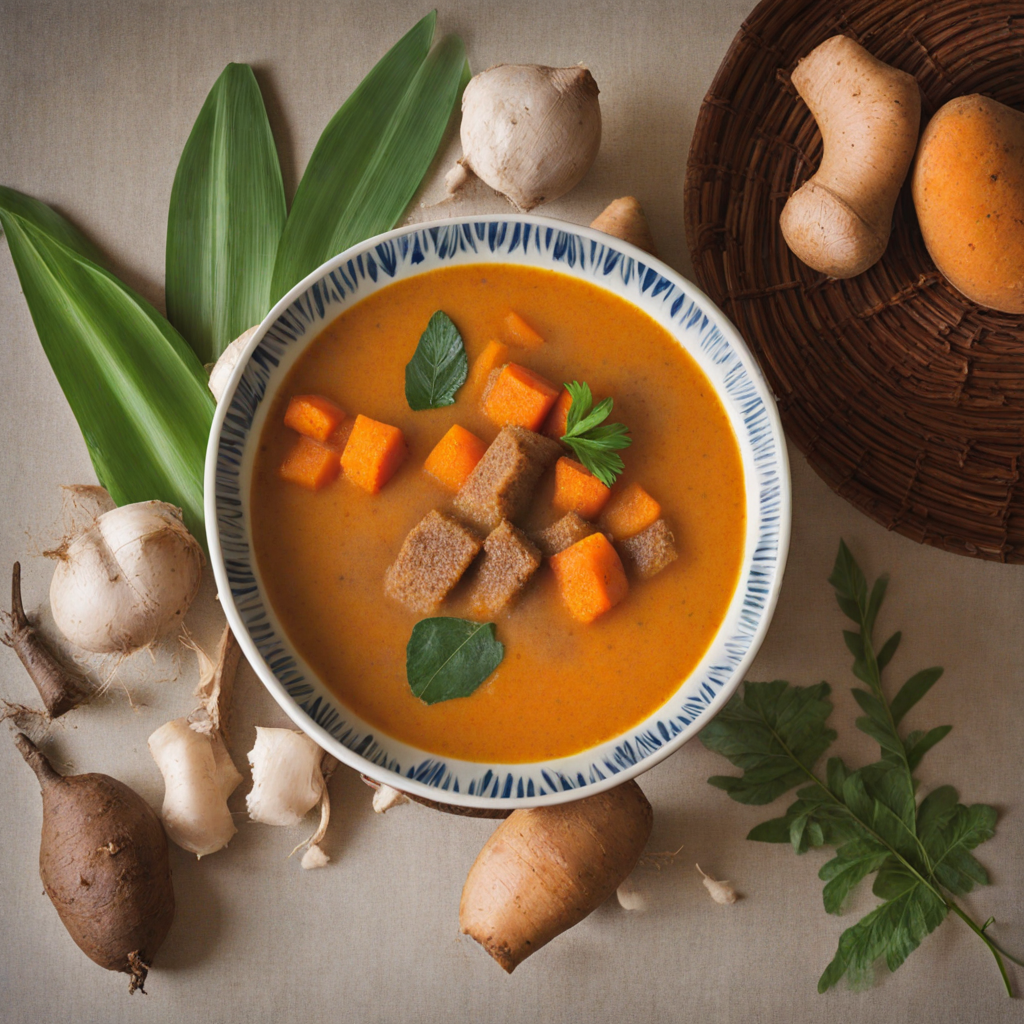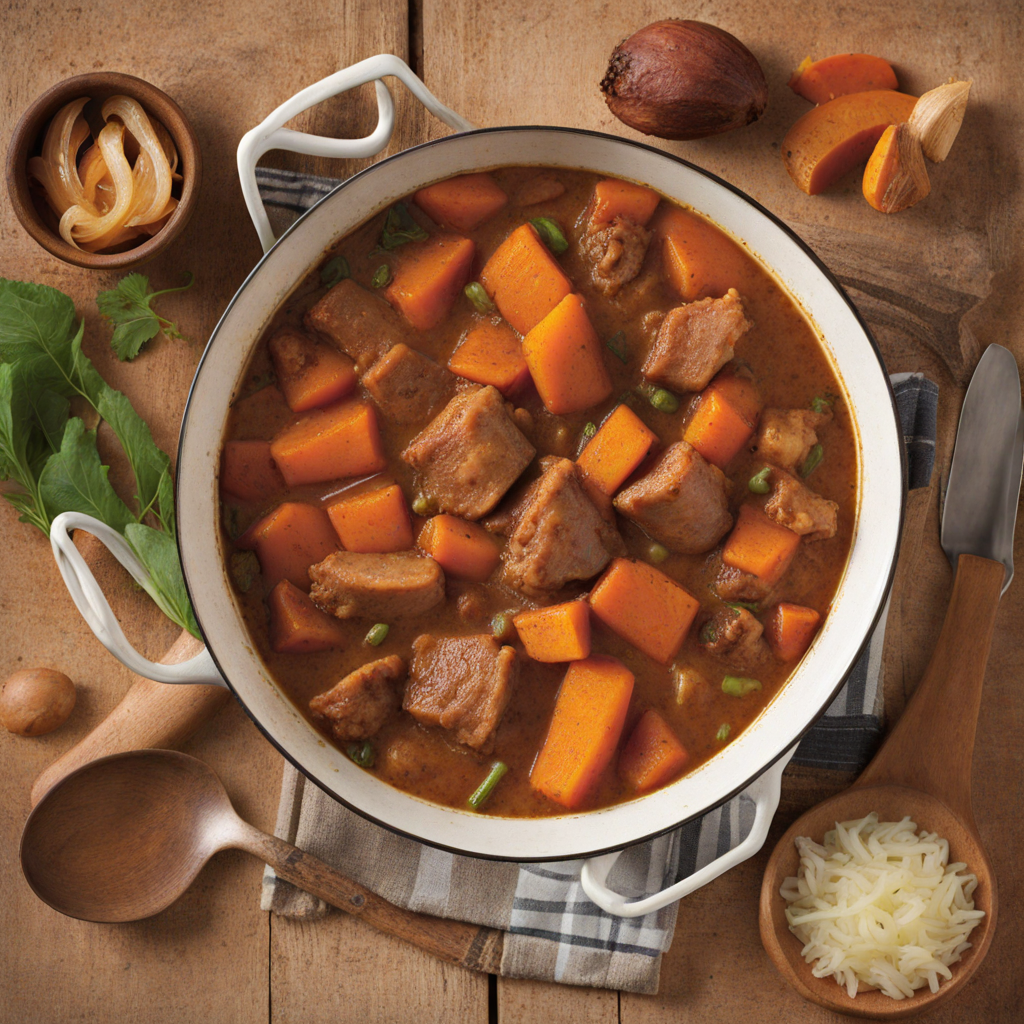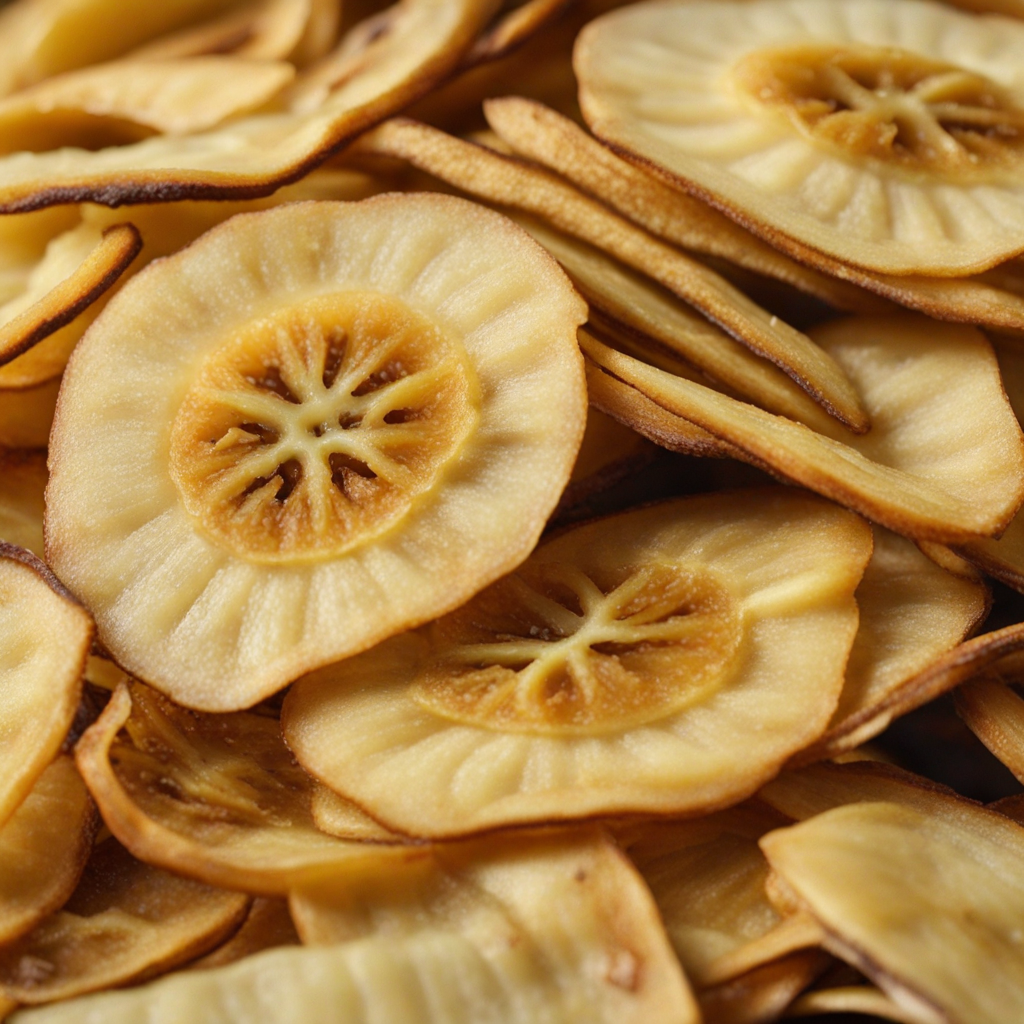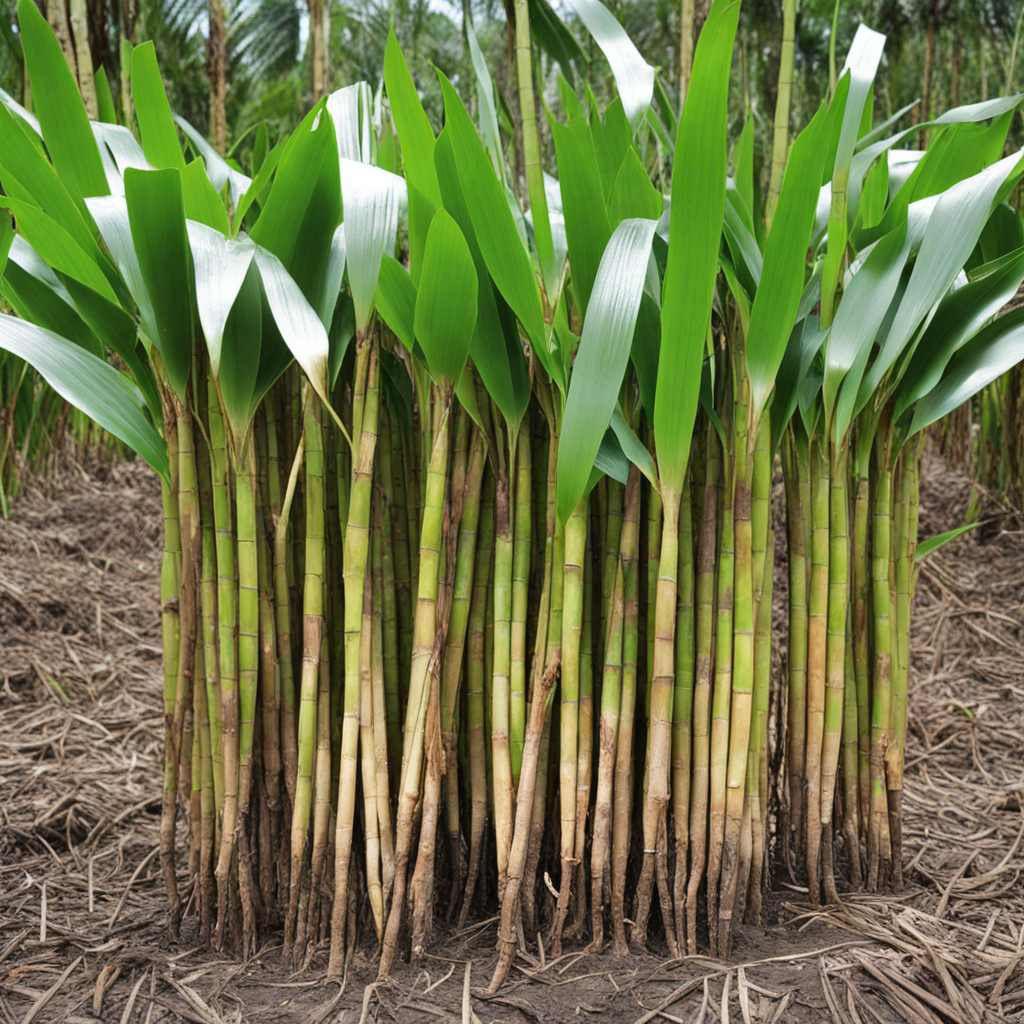Yam Soup
Yam Soup is a cherished dish from Papua New Guinea that highlights the rich diversity of flavors and ingredients native to the region. The soup is primarily made with yams, a starchy root vegetable that offers a creamy texture and a subtly sweet flavor when cooked. These yams are often harvested fresh from local gardens, ensuring that the dish is not only delicious but also supports local agriculture. The preparation involves boiling the yams until tender, after which they are mashed or blended to create a smooth base for the soup. To enhance the flavor profile, various local ingredients are added, including fresh herbs like parsley and green onions, as well as spices that may include ginger and chili for a hint of heat. Coconut milk is frequently incorporated, adding a luscious creaminess that complements the earthiness of the yams. The soup is often seasoned with salt and sometimes a splash of lime juice, providing a refreshing contrast to the rich flavors. Each spoonful is a harmonious blend of sweetness, creaminess, and a touch of zest, making it a comforting yet intriguing dish. Yam Soup is not just a meal; it is a cultural experience that reflects the culinary traditions of Papua New Guinea. It is typically enjoyed as a hearty lunch or dinner, often served with a side of fresh vegetables or fish, showcasing the country's reliance on fresh, locally sourced ingredients. This dish can be a delightful discovery for anyone seeking to explore new tastes, as it embodies a unique combination of flavors that represent the essence of Papua New Guinea's rich culinary heritage.
How It Became This Dish
Yam Sup: A Culinary Journey Through Papua New Guinea Origins of Yam Sup Yam Sup is a traditional dish from Papua New Guinea, a nation steeped in rich cultural diversity and a tapestry of culinary practices. The dish primarily revolves around yams, a staple food in many parts of the Pacific Islands, including Papua New Guinea. Yams have been cultivated in the region for thousands of years, tracing back to the early inhabitants of the islands. The domestication of yams is believed to have occurred around 5000 years ago, with evidence of their use found in archaeological sites across the Pacific. In Papua New Guinea, yams hold not only nutritional value but also significant cultural importance. They play a central role in local festivals and rituals, often symbolizing prosperity and fertility. The cultivation and harvest of yams are communal activities, bringing together families and communities in celebration. The preparation of Yam Sup is often a communal affair, where the process of cooking becomes a way to strengthen social bonds. Cultural Significance Yam Sup is more than just a dish; it is a marker of identity and heritage for many Papua New Guineans. In various cultures across the islands, yams are often associated with rituals and ceremonies, particularly in the Highlands where yam cultivation is at its peak. During these ceremonies, yams are presented as offerings or as part of a feast to honor ancestors and deities, highlighting their importance in the spiritual and social fabric of the community. The preparation of Yam Sup often involves a blend of local ingredients, spices, and cooking methods that vary from one region to another. Traditional cooking methods, such as steaming or boiling, are commonly employed, allowing the natural flavors of the yams to shine through. The dish is often enhanced with local vegetables, meats, and aromatic herbs, reflecting the diverse ecosystems of Papua New Guinea. This adaptability in flavors and techniques illustrates the cultural significance of Yam Sup as a canvas for regional culinary expression. Development Over Time As Papua New Guinea has evolved, so too has the dish of Yam Sup. Historically, the preparation of Yam Sup would have been limited to the resources available in local environments. However, with globalization and the influx of new culinary influences, the dish has transformed over time, integrating both traditional and modern elements. In the early 20th century, with the advent of colonial influences, there was a noticeable shift in food practices among Papua New Guineans. While many communities maintained their traditional practices, others began to incorporate foreign ingredients and cooking techniques into their diets. Rice, for example, became a popular staple, often used as a substitute or accompaniment to traditional dishes like Yam Sup. This adaptation demonstrated the resilience of Papua New Guinean culinary traditions, allowing them to evolve while still honoring their roots. In recent decades, the globalization of food culture has led to a resurgence of interest in traditional practices. Younger generations are increasingly aware of their cultural heritage and are striving to preserve and celebrate traditional dishes like Yam Sup. This revival has been aided by the growing popularity of indigenous foods and a movement toward sustainable and local eating practices. Today, Yam Sup is featured not only at family gatherings and local celebrations but also in culinary festivals and restaurants showcasing Papua New Guinea's rich gastronomic heritage. Modern Interpretations The modern interpretation of Yam Sup reflects both respect for traditional methods and a willingness to experiment with new flavors. Chefs and home cooks alike have begun to play with the dish, adding elements such as coconut milk, spices, and contemporary garnishes to elevate the experience. This blending of old and new has allowed Yam Sup to remain relevant in a rapidly changing food landscape. In urban areas, where traditional ingredients may not always be readily available, creative adaptations of Yam Sup have emerged. For instance, sweet potatoes or taro are sometimes used as substitutes for yams, allowing for a delicious variation that still pays homage to the original dish. Additionally, the use of spices from other cultures, such as ginger or chili, has been embraced, lending new dimensions to the dish while maintaining its core identity. The rise of food tourism in Papua New Guinea has also contributed to the popularity of Yam Sup. Travelers seeking authentic culinary experiences often seek out traditional dishes, leading to an increased appreciation for Yam Sup both locally and internationally. Cooking classes, food tours, and cultural exchanges allow visitors to engage with the dish hands-on, learning about its significance and preparing it alongside local chefs and families. Conclusion Yam Sup is a dish that embodies the spirit of Papua New Guinea – vibrant, diverse, and deeply rooted in tradition. From its origins as a staple food in the diets of ancient communities to its modern interpretations in urban kitchens, Yam Sup reflects the rich cultural heritage of the region. It is a testament to the resilience of Papua New Guinean culinary traditions, adapting and evolving while still honoring its past. As the world continues to embrace indigenous foods and sustainable practices, Yam Sup stands as a symbol of cultural pride and identity for the people of Papua New Guinea. It reminds us of the significance of food in shaping our experiences and communities, serving as a bridge between generations and a celebration of the land's bounty. With each bite of Yam Sup, one can savor not only the flavors of the dish but also the stories, traditions, and cultural significance that make it a cherished part of Papua New Guinea's culinary landscape.
You may like
Discover local flavors from Papua New Guinea







